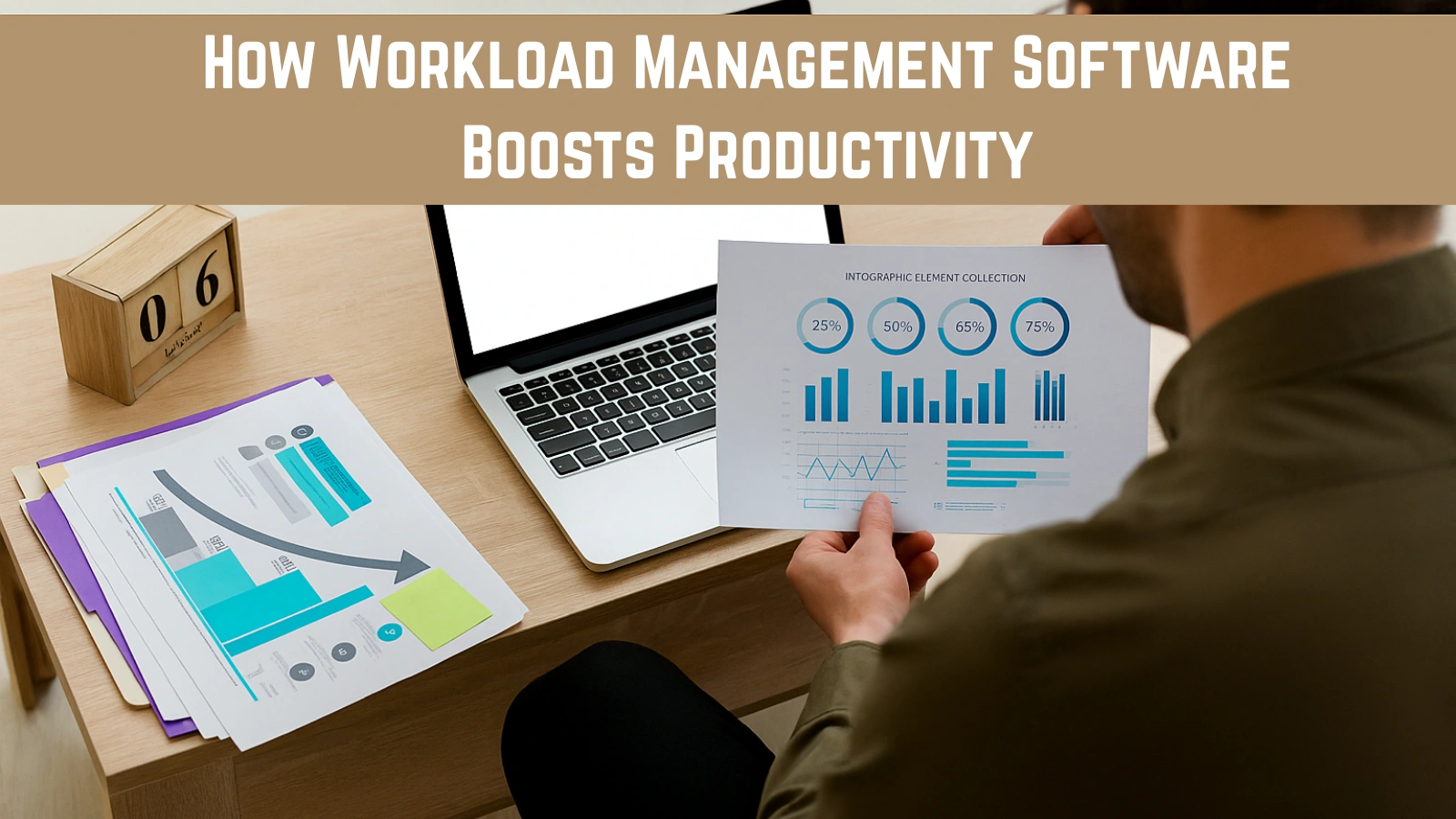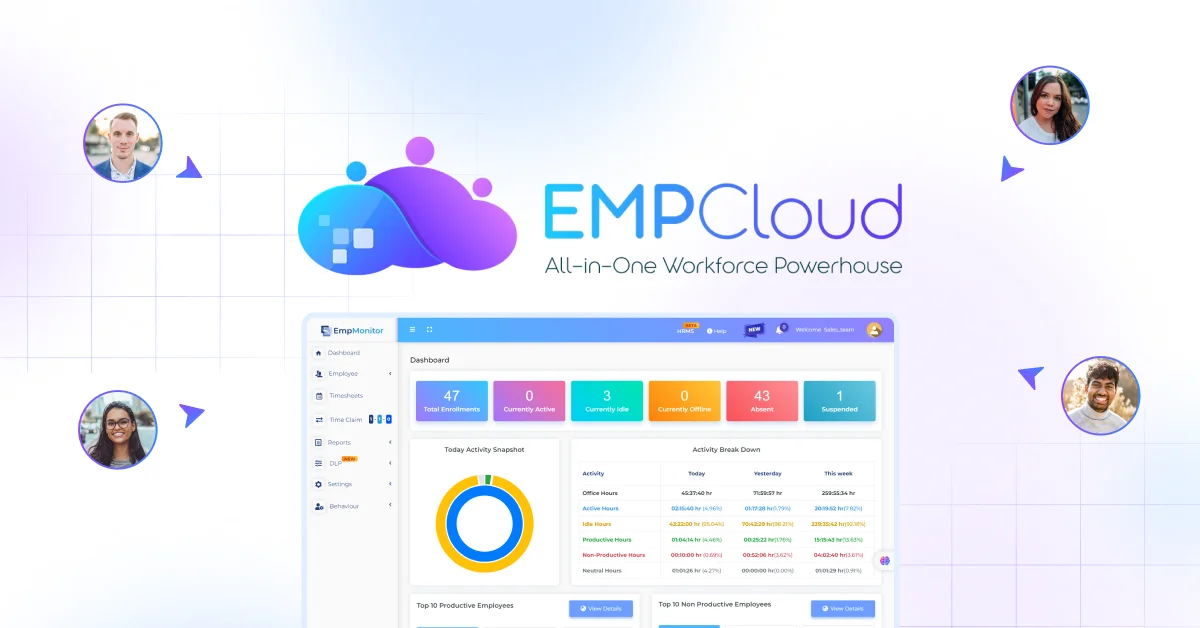
Productivity has less to do with how much work you take on and more to do with how you organize it. Every professional faces competing deadlines, unexpected tasks, and shifting priorities. Without a clear system, this often results in stress, missed opportunities, and lower output. That’s where workload prioritization becomes the difference-maker.
Instead of reacting to tasks as they pile up, workload prioritization helps you align actions with goals, manage resources effectively, and maximize performance. Paired with the right tools to prioritize tasks and smart workload management practices, you can transform chaos into clarity and achieve measurable results.
This blog unpacks everything you need to know about workload prioritization, from its core meaning to strategies, tools, and platforms like EmpCloud that help streamline the process.
In a hurry? Listen to the blog instead!
What Is Workload Prioritization And Why Does It Matter?
Workload prioritization means identifying which tasks deserve immediate attention and which can wait. It’s about ranking responsibilities by urgency, importance, and value to ensure the right work gets done at the right time.
Why does it matter?
- It prevents overwhelm and burnout.
- It ensures critical projects don’t fall through the cracks.
- It improves decision-making under pressure.
- It aligns employee efforts with organizational goals.
- It strengthens employee goal setting by connecting daily priorities with long-term objectives.
Without workload prioritization, even talented teams may spend valuable time on low-impact tasks while high-value opportunities slip away. For individuals, it provides clarity and confidence. For businesses, it builds consistency, efficiency, and long-term growth.
What Are The Common Challenges In Workload Management?
Even with the best intentions, many professionals struggle with effective workload management. Some common challenges include:
Unclear Priorities:
When priorities are not defined, every task feels equally urgent, which leads to confusion and stress. Employees end up reacting to whatever lands on their desk instead of focusing on high-value work. Strong workload management creates clarity and ensures the right tasks come first.
Interruptions and Distractions:
Frequent interruptions like emails, chat messages, and phone calls eat away at deep focus time. This constant context-switching slows progress and lowers efficiency. A structured workload management system helps limit distractions by setting boundaries and scheduling focused work blocks.
Multitasking Myths:
Many still believe multitasking boosts efficiency, but in reality, it drains productivity. Switching between tasks reduces concentration, increases mistakes, and delays project delivery. Effective workload prioritization ensures one task gets full attention before moving to the next.
Uneven Task Distribution:
Some team members often feel overburdened, while others are left underutilized. This imbalance not only affects performance but also impacts morale and fairness. Smart workload management tools allow managers to allocate tasks evenly and monitor real-time progress.
Lack of the Right Tools:
Without reliable workload management software, tracking deadlines and prioritizing tasks becomes guesswork. Teams risk missing deadlines, duplicating work, and reducing accountability. Investing in the right workload management tools provides visibility, structure, and better coordination across projects.
Recognizing these challenges is the first step to addressing them with effective strategies and technology.
Also Read:
What Are The Essential Tools To Prioritize Tasks Effectively?
Success begins with choosing the right tools to prioritize tasks. These tools help categorize, track, and complete work more efficiently. Some essentials include:
Task Lists and Planners:
Simple checklists and planners remain one of the most reliable tools to prioritize tasks. They provide a clear snapshot of what needs attention each day, helping individuals stay organized. When combined with workload prioritization, these tools ensure important tasks never get overlooked.
Calendar Systems:
Digital calendars allow professionals to block time for critical tasks, meetings, and deadlines. By visually mapping work, teams can see where their hours go and avoid overbooking. Calendar systems also support workload management by creating realistic schedules that balance efficiency and flexibility.
Priority Matrices:
A priority matrix ranks tasks based on urgency and importance, making it easier to decide what comes first. This tool prevents energy from being wasted on low-value work while critical activities get delayed. For teams practicing workload prioritization, it builds a disciplined approach to decision-making.
Automation Platforms:
Automation tools minimize manual effort by handling repetitive tasks like reminders, updates, or data entry. This frees employees to focus on work that requires creativity and problem-solving. As one of the modern workload management tools, automation supports efficiency and boosts productivity.
Productivity Reports:
Regular productivity reports provide insights into how time and resources are being used. By analyzing performance data, organizations can identify bottlenecks, measure progress, and ensure priorities align with employee goals. These reports also reinforce accountability and continuous improvement.
When paired with clear workload prioritization strategies, these tools streamline processes, saving time and reducing stress.
How Can Workload Management Balance Efficiency And Performance?
Workload management goes beyond handing out assignments. It ensures every task has purpose, timelines are realistic, and people have the right resources to succeed. The goal is not just to finish tasks but to balance efficiency with consistent performance. Strong workload management also minimizes stress and promotes long-term productivity.
Key Principles Of Effective Workload Management Include:
Ensuring Workloads Are Fair and Balanced:
Unequal task distribution leads to burnout for some employees and disengagement for others. Fair workload management spreads responsibilities evenly so no one feels overburdened or underutilized. This balance builds trust and creates a healthier, more motivated team.
Tracking Progress in Real Time:
Without visibility, it’s difficult to know whether projects are on schedule. Real-time tracking gives managers insight into performance, deadlines, and possible bottlenecks. Modern workload management tools make it easier to monitor activities and keep teams accountable.
Adjusting Resources When Projects Shift:
Projects rarely stay fixed; new priorities emerge, and timelines change. Effective workload management allows leaders to reassign resources quickly to meet shifting needs. This flexibility ensures projects stay on track without overwhelming teams.
Aligning Personal Strengths with the Right Assignments:
People excel when their work matches their skills and strengths. By aligning employees with tasks they are best suited for, workload management improves both efficiency and job satisfaction. It also ensures projects are handled by the right people, leading to higher-quality results.
When workload management is done right, individuals feel empowered to do their best work, while organizations enjoy steady growth and consistent output. It creates a culture where productivity and performance naturally go hand in hand.
What Are The Best Workload Management Tools To Explore?
The market offers a wide variety of workload management tools, but the best ones stand out because they address the real needs of modern teams. These tools not only organize tasks but also strengthen collaboration, improve efficiency, and make workload prioritization easier.
Key features Of The Best Workload Management Tools Include:
Collaboration Support:
Strong collaboration features allow teams to share dashboards, assign tasks, and track progress together. When everyone has visibility, accountability improves, and miscommunication reduces. Workload management tools that foster collaboration create a more united and efficient work environment.
Analytics and Reporting:
Data-driven insights show how individuals and teams perform over time. Reports highlight productivity levels, bottlenecks, and trends that affect deadlines. By using workload management tools with analytics, managers can make informed decisions that improve workload prioritization and performance.
Scalability:
As businesses grow, their needs evolve. The best workload management tools scale with teams, supporting more users, projects, and complex workflows without slowing down. Scalability ensures that the system remains effective whether managing a small team or a global workforce.
Integration:
No tool can work in isolation. Integration with calendars, email, and project platforms ensures smooth workflows and prevents duplication of effort. Workload management tools with strong integration features keep everything connected, making Work prioritization more systematic and efficient.
Using the right workload management tools helps organizations balance productivity and deadlines while giving teams the clarity they need to excel.
Also Read:
How Workload Management Software Boosts Productivity?
Modern workplaces demand more than spreadsheets or manual task planning. That’s why many businesses turn to workload management software to simplify operations, improve coordination, and maximize efficiency. By automating repetitive processes and offering real-time insights, this software empowers teams to focus on the work that matters most.
Automated Scheduling:
Workload management software automates task assignment and scheduling, reducing the chances of overlooked responsibilities or missed deadlines. This ensures projects stay on track without requiring constant supervision.
Automated scheduling also supports Work prioritization by clearly defining what needs attention first.
Resource Allocation:
The software helps managers allocate tasks and resources fairly, preventing some employees from being overwhelmed while others remain underutilized. Balanced workloads improve morale and ensure consistent performance. Smart allocation directly improves both team efficiency and project outcomes.
Time Tracking:
Accurate time tracking provides insights into how employees spend their work hours. Managers can identify inefficiencies, measure productivity, and make better decisions for future projects. This feature in workload management software ensures accountability while supporting long-term workload prioritization.
Centralized Control:
Managing multiple teams and projects becomes easier with a centralized platform. Workload management software brings everything into one dashboard, from deadlines to task progress. Centralized control eliminates silos and creates transparency across departments, leading to faster collaboration and better results.
With workload management software handling operational details, leaders and employees can redirect their energy toward strategy, innovation, and growth rather than micromanagement.
Among these solutions, EmpCloud stands out by going beyond task planning to provide a unified workforce management suite. It combines several workforce management software like recruitment, productivity tool, HR solutions, project management, and real-time insights into one system, making workload prioritization more structured, scalable, and effective for organizations of all sizes.
How EmpCloud Helps In Workload Prioritization?
EmpCloud goes beyond traditional workload management, serving as an all-in-one workforce platform that simplifies onboarding, performance tracking, and compliance, helping organizations optimize operations seamlessly.
Unified Solutions:
EmpCloud redefines how businesses manage their workforce by offering a comprehensive suite of features designed to enhance both employee experience and managerial efficiency.
Trusted by organizations across industries, EmpCloud has proven its ability to adapt and scale for teams of all sizes.
Manager-Centric Features:
- Time Tracking: Gain visibility into work hours and task progress for smarter prioritization.
- Geo-Location Tracking: Monitor field teams in real time to improve resource allocation.
- Task & Opportunity Management: Assign and track tasks seamlessly to keep priorities aligned.
- Client Management: Centralize client information and monitor interactions to ensure service excellence.
- Productivity Tracking: Access real-time insights into employee performance.
- Project Management: Plan strategically and ensure projects are delivered on time.
- Data Loss Prevention: Protect sensitive business information with enterprise-grade security.
- Report Generation: Generate detailed reports for better decision-making.
HR-Centric Features:
- Face Recognition Attendance: Enable secure, contactless access and attendance tracking.
- Leave & Attendance Tracking: Simplify management with accurate, automated records.
- Policy & Document Management: Upload and store critical documents for easy access.
- Automated Timesheets: Reduce manual effort while improving scheduling accuracy.
- Employee Access History: Track workforce movement across multiple locations.
- Employee Requests Management: Handle WFH, corrections, and comp-offs effortlessly.
- Exit Management: Streamline offboarding with structured processes.
- Payroll Management: Automate payroll with precision and compliance in mind.
Centralized Insights Dashboard:
EmpCloud consolidates workforce data into a single, unified dashboard, giving leaders real-time visibility into:
- Timesheets
- Live location tracking
- Contactless attendance
- Task allocation
- Employee productivity
With these integrated capabilities, EmpCloud transforms workload prioritization from a manual challenge into a strategic advantage, helping organizations balance efficiency, compliance, and employee satisfaction.
What Are The Best Strategies To Combine Tools And Workload Management?
To truly master workload prioritization, organizations must combine the right tools with structured management practices. A hybrid approach creates flexibility while keeping teams aligned and productive. Here are some proven strategies:
Integrate Digital Tools:
Workload management software offers automation, analytics, and centralized tracking, but pairing it with manual planning methods ensures adaptability. For example, using a task management app alongside a physical planner allows teams to stay structured yet flexible.
This balance strengthens workload management by catering to both digital efficiency and personal work styles.
Adopt a Prioritization Framework:
Frameworks like the Eisenhower Matrix or ABC analysis give structure to decision-making. These methods help teams separate urgent tasks from important ones and prevent wasted energy on low-priority work.
When paired with modern workload management tools, such frameworks turn abstract priorities into actionable steps.
Review Regularly:
Priorities often shift as projects evolve or new demands arise. By reviewing tasks weekly or monthly, managers can realign resources and keep work prioritization relevant. Regular reviews also help identify unfinished tasks, making it easier to adjust schedules before bottlenecks occur.
Encourage Collaboration:
Transparency is key to fair workload distribution. Sharing dashboards or task lists ensures everyone knows what their teammates are working on. With collaborative workload management tools, teams avoid duplication, track progress in real time, and ensure accountability across all levels.
Leverage Analytics:
Data reveals where productivity thrives and where resources are strained. Analytics from workload management software highlight performance patterns, making it easier to refine priorities. Leaders can then optimize task distribution, ensuring the right people work on the most valuable projects.
By blending structured methods with advanced workload management tools, organizations achieve a system that is both practical and sustainable, turning workload prioritization into a long-term growth driver.
What Are The Real-World Benefits Of Mastering Workload Prioritization?
Organizations and individuals who master effective task management experience tangible results:
Higher Productivity:
When workload prioritization is applied, employees spend their energy on the most important activities instead of scattering efforts on low-value tasks. This ensures every hour brings meaningful results. By streamlining focus, teams achieve more in less time and deliver greater overall output.
Improved Morale:
Balanced workloads prevent exhaustion and frustration that often come from task overload. When teams know priorities are set fairly, they feel supported and motivated. Effective task management directly improves workplace satisfaction and reduces employee turnover.
Stronger Focus:
Clear prioritization eliminates confusion about what should be done first. Teams no longer waste time debating tasks or switching between responsibilities. With that, individuals concentrate fully on what drives results, leading to sharper execution.
Faster Delivery:
Projects often lag due to misplaced focus and unplanned work. By following, teams streamline timelines and tackle urgent items first. This approach leads to quicker completions and often exceeds client or internal expectations.
Better Client Outcomes:
Clients value consistency, reliability, and timely delivery. When organizations use Work prioritization, they allocate the right resources to client-facing projects, ensuring quality results. This builds trust, strengthens relationships, and encourages long-term partnerships.
These benefits prove that prioritization is not just a personal skill but a growth strategy for businesses of all sizes.
Final Thoughts
Workload prioritization is more than a productivity hack, it’s a foundation for sustainable success. By using tools to prioritize tasks, embracing smart workload management, and leveraging advanced workload management software like EmpCloud, individuals and businesses can maximize efficiency, reduce stress, and achieve long-term growth.
The key lies in being intentional. With the right systems and strategies in place, you don’t just manage work, you master it.
FAQs
Q1. What is workload prioritization?
Ans. Work prioritization is the process of ranking tasks by urgency and importance to ensure the most critical work gets done first.
Q2. How do tools to prioritize tasks improve efficiency?
Ans. They help structure tasks, reduce guesswork, and keep focus on deadlines and goals.
Q3. Why is workload management important?
Ans. It ensures tasks are fairly distributed, resources are used effectively, and projects finish on time.
Q4. What role does workload management software play?
Ans. It automates scheduling, monitors progress, and provides insights to enhance productivity.
Q5. How does EmpCloud improve workload prioritization?
Ans. EmpCloud offers time tracking, project management, client management, and analytics that make workload prioritization accurate, measurable, and impactful.








